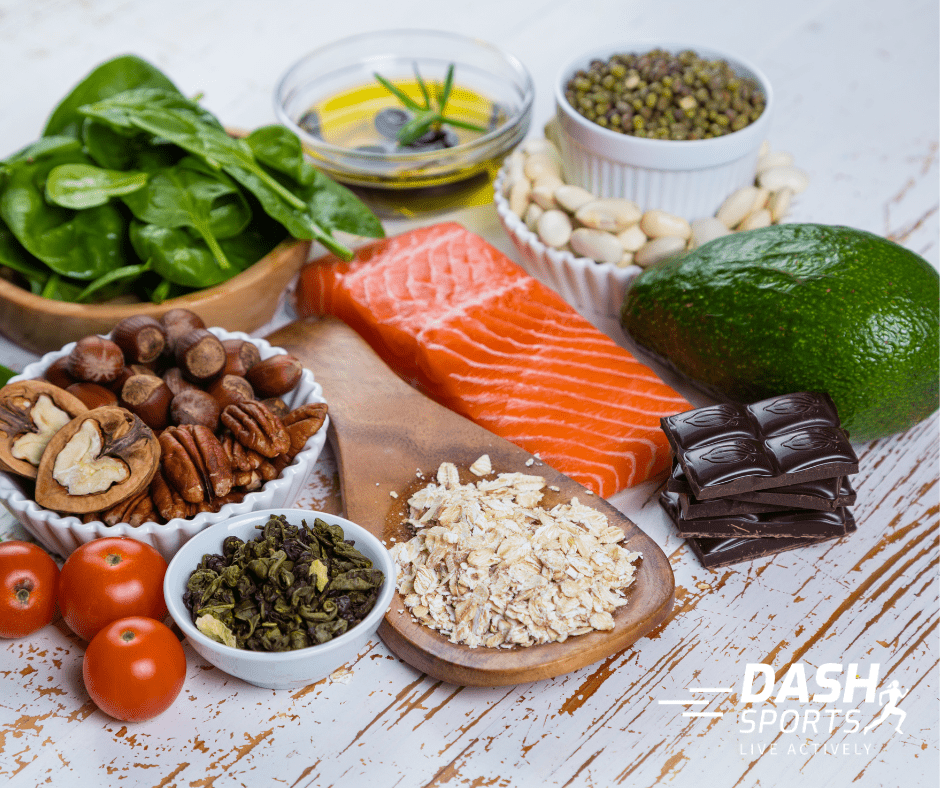Participating in a 5K can be a thrilling and rewarding experience whether you’re a seasoned runner or new to the race scene. Preparation is key to success, and creating a tailored training plan that aligns with your fitness level is the foundation of a positive racing experience. Besides physical training, setting achievable goals will help you stay motivated and focused as you approach race day, ensuring your efforts are correctly channeled towards your target finish time or personal best.
Given the short distance of just 3.1 miles, a 5K race allows runners to test their speed and endurance without the intense demand of longer races. Taking time to nail down your nutrition and hydration strategy can significantly impact your performance and overall comfort during the race. Moreover, preparing the day before by getting ample rest and organizing your gear will help calm any pre-race jitters, allowing you to approach the start line confidently. On race day, remember to run at a comfortable pace and focus on the experience itself, which can be as important as the time you clock.
- Explore Our Store Today
Experience the unique Dash Sports approach with our tailored shoe fitting service.
Key Takeaways
- Tailoring your training and setting achievable goals are essential for 5K success.
- Proper nutrition and hydration are critical for optimal race performance.
- Pre-race preparation and race day strategy contribute to a confident and enjoyable racing experience.
Setting Your 5K Goals
When you embark on a 5K race, setting clear, attainable goals is paramount. These form the bedrock of your training regimen and race-day strategy, directly influencing your goal pace and potential to set a new personal record (PR).
Determining Your Fitness Level
Before you lace up your running shoes, it’s vital to assess your current fitness level realistically. A benchmark such as a timed one-mile run can provide a snapshot of your fitness and help estimate your 5K pace. This initial step supports setting an appropriate goal pace that challenges you without risking overexertion.
- Warm-up: Engage in a 15-20 minute warm-up to ensure your body is ready.
- Run: Cover a mile as quickly as you can, ideally on a flat, uninterrupted route or track.
- Analyze: Use the time to establish a baseline for your training.
Establishing a Personal Record
Once your current fitness level is measured, aim to determine a realistic yet ambitious goal pace for your 5K. Your personal record serves as a valuable reference point. To break it, plan incremental improvements and integrate them into your 5K-specific workouts.
- Review your PR: Examine your best time to date and note areas for improvement.
- Set specific targets: Break down your desired finish time into mile splits to manage your race pace.
- Success: With a clear target, train specifically towards shaving off seconds or minutes to achieve success.
5K Training Plan Basics
Preparing for a 5K involves creating a structured training plan that builds your running endurance, incorporates a variety of workouts, and allows for proper recovery.
Building a Running Base
You should start by establishing a running base; this is fundamental to your 5K training plan. Your running base consists of consistent, easy runs that help strengthen your running muscles and improve your aerobic efficiency. Schedule these runs three to four times per week, ensuring they are at a comfortable pace where you can maintain a conversation.
Incorporating Key Workouts
Once you have a solid base, begin incorporating key workouts into your weekly schedule. These should include:
- Intervals: These are short, high-intensity bursts followed by periods of recovery.
- Tempo Runs: A tempo run is a sustained effort at a more challenging pace than your easy runs to increase your lactate threshold.
- Long Runs: These should be done once a week to increase your stamina.
Ensure these workouts are balanced throughout the week to prevent overtraining.
Balancing Intensity and Recovery
Balancing hard workouts with adequate recovery is crucial for your progress and to prevent injuries. Include easy runs or cross-training activities, like cycling or swimming, on days following intense workouts. This will help maintain your fitness while reducing the impact on your body. Always allow at least one day a week for complete rest or very light activity to give your body time to heal and adapt to the training load.
Nutrition and Hydration Strategies
Proper nutrition and hydration lay the foundation for peak performance in a 5K race. Your body requires the right mix of nutrients to fuel your run, and staying hydrated is crucial for maintaining endurance and preventing fatigue.
Eating for Performance
To fuel your muscles for the demands of a 5K race, you need a balanced diet rich in carbohydrates. Carbohydrates are your body’s main source of energy. On race day, a breakfast that includes simple carbohydrates can offer quick energy, and complex carbohydrates will provide sustained fuel. A meal like toast with banana and honey is a great example, offering immediacy and longevity in energy release.
| Example Breakfast Foods | Benefits |
|---|---|
| White bread or sourdough | Easier to digest, less likely to cause stomach upset |
| Bananas | Quick-release energy and potassium for nerve function |
| Honey | Natural sugar for a quick energy boost |
Hydration Before and During the Race
Begin hydrating well before the race starts, aiming for ½-1 ounce of water per pound of your body weight throughout the previous day. During the race, take advantage of water stations to maintain hydration without overdoing it, as this can lead to bloating or dilution of electrolytes. Drink according to thirst to avoid dehydration and hyponatremia and consider a sports drink if you prefer a hydration source with electrolytes.
Pre-Race Preparation
Proper preparation can set the foundation for a successful 5K race. Ensuring adequate sleep, a packed race day bag, and a tailored warm-up routine are essential to maximize your performance.
The Importance of Sleep
Good sleep is crucial for peak athletic performance. Aim to get quality sleep two nights before the race to offset pre-race jitters that might disrupt your rest the night immediately before. Your body and mind need this time to recharge for the energy output on race day.
Race Day Checklist
- Race Pack: Confirm you have your bib number, safety pins, and timing chip the night before (if provided ahead of time).
- Clothing: Set out weather-appropriate gear, including comfortable running shoes.
- Nutrition: Prepare pre-race meals and snacks like a banana or energy bar.
- Hydration: Fill your water bottle to stay hydrated before the race starts.
Warm-Up Routine
A good warm-up increases your heart rate and circulation, loosens your joints, and increases blood flow to your muscles. Start with 5-10 minutes of light jogging followed by dynamic stretching—leg swings, arm circles, and lunges. This helps to prevent injury and primes your body for optimum performance.
Race Day Execution

Executing your race plan on the day of the 5K is crucial for success. It involves managing your pace, effort, and adrenaline from the first to the final mile. Understanding how to navigate these aspects will play a vital role in achieving your desired outcome.
Pacing Your Run
Your pace is the cornerstone of race day. Start the first mile at a controlled speed that feels slightly conservative—it will pay off later. Aim to run the second mile at your established race pace, using the energy from the crowd and your training. In the final mile, assess your remaining energy and push toward the finish line without overexerting yourself prematurely.
Managing Effort Across the Course
Distribute your effort level evenly to avoid burnout. Throughout the race, listen to your body and adjust your speed accordingly. If the course is hilly, conserve energy on the inclines and use the downhills to your advantage, maintaining a steady effort level.
Handling Race Day Adrenaline
Adrenaline can be both a friend and a foe. Harness it at the start to get moving, but keep it in check; don’t let excitement push you beyond your sustainable race pace. Use deep breaths and focus on your running form to stay calm and collected, especially as you approach the finish line and your adrenaline surges.
Post-Race Recovery
After crossing the finish line of a 5K race, stepping into an effective post-race recovery phase is crucial for your well-being and future performance. Your recovery should involve strategic actions to cool down your body, address muscle soreness, and evaluate your race performance in a supportive community.
Cooling Down
Once you’ve completed your race, it’s essential to cool down to help your body transition to a state of rest. Start with a light jog or walk for about 15 minutes to prevent muscle stiffness. Gradually decrease your heart rate and keep blood circulating to aid in the removal of lactic acid from your muscles.
Addressing Muscle Soreness
Muscle soreness after a race is common, but it doesn’t have to derail your recovery. Incorporate gentle post-race stretching, which helps alleviate immediate muscle tightness, and consider engaging in activities that promote muscle repair, such as a low-intensity run the day after. Hydration is vital; replenishing fluids will minimize headaches and muscle cramping. You can also utilize recovery tools such as foam rollers or massage to aid in relieving soreness.
Evaluating Your Race Performance
Reflecting on your race provides a learning opportunity for future events. Ask yourself specific questions:
- How did the race go in comparison to your training?
- Were there any unexpected challenges?
Use this opportunity to connect with fellow runners and share experiences. Not only does this foster a sense of community, but it can also provide you with support and insights you might not have previously considered.
- Explore Our Store Today
Experience the unique Dash Sports approach with our tailored shoe fitting service.
Avoiding Common Pitfalls
In approaching a 5K race, it’s vital to circumvent issues that could hinder your performance or affect your health. By being vigilant about injury prevention and understanding the signs of overtraining, you give yourself the best chance of success and health.
Preventing Injury
Your primary defense against injury is a balanced training plan, which includes adequate rest days and a variety of workouts. Start with a dynamic warm-up to prepare your muscles for the run. It’s essential to run conservatively, especially if you’re new to running; don’t push too hard too soon. Stick to a pace that feels challenging yet manageable. Remember, incremental increases in distance and intensity are key to allowing your body to adapt without injury.
Recognizing Signs of Overtraining
Listen to your body—fatigue, irritability, and a decline in performance can be early indicators of overtraining. Ensure you’re not ignoring these signs, which could lead to burnout or injury. Incorporate regular rest or cross-training days to mitigate these risks. Tracking your workouts can be beneficial, as a sudden increase in volume or intensity can be a clear signal to scale back. If you notice persistent fatigue or a decrease in your enthusiasm for training, consider it a sign to rest and recover.
Enhancing Your 5K Experience

To truly elevate your 5K running experience, focus on the joy of running with others, adeptly managing variable conditions, and continuously setting new, achievable goals post-race.
Running with Friends and Community
Running in a 5K event is not just a test of endurance; it’s a social experience. Partner with a friend or join a local community group to train with. This camaraderie boosts your morale and can push your pace to new heights as you find motivation in the shared challenge. Group training can also introduce structured workouts, which help improve speed in a supportive environment.
Dealing with Weather and Course Conditions
Adaptability is key when facing weather and course changes. Always check the forecast ahead of time and prepare suitable gear to combat blistering heat or unexpected rainfall. Understand the course elevation can affect your run; train on similar terrain to build up your endurance. Take the time to learn about effective pacing in different conditions to maintain a steady speed throughout the race.
Setting New Goals After the Race
After crossing the finish line, take a moment to reflect and then set fresh targets. Whether you aim to improve your time, conquer more challenging elevations, or increase your endurance, new objectives keep you driven. Consider resources like a 5k race pace chart to measure progress and guide your training. Your speed and pace are markers of your growth in the sport, and setting successive goals ensures your development never stagnates.
Frequently Asked Questions
In this section, you’ll find targeted advice to tackle the most common concerns and queries about running a 5K race.
What are some effective strategies for beginners running their first 5k?
For beginners, starting with a training plan that includes a mix of running and walking is essential. Build up your distance gradually to avoid injury and increase confidence.
What should I avoid doing before participating in a 5k run?
Avoid overtraining, neglecting rest days, and making any major changes to your diet or routine just before the race. Ensure a good night’s sleep before the event to maintain energy levels.
How can I improve my 5k running time to achieve a sub-20-minute finish?
To break the sub-20-minute mark, incorporate interval training and tempo runs into your routine to increase speed and endurance. Consistent training and proper pacing are key to improving your time.
What last-minute preparations can enhance my 5k race performance?
Ensure you’re well-hydrated and eat a light, easily digestible meal a few hours before the race. Do a light warm-up on race day to get your muscles ready for the run.
Is it possible to have a good 5k run without prior training?
If you’re in good health and have an active lifestyle, you may be able to complete a 5K without specific training. However, not preparing can increase the risk of injury and affect your overall experience of the race.
What are the key tactics to employ when aiming to win a 5k race?
Competitive runners use tactics such as studying the course beforehand, setting a steady pace that can be maintained throughout the race, and employing a strong finish with a sprint.





